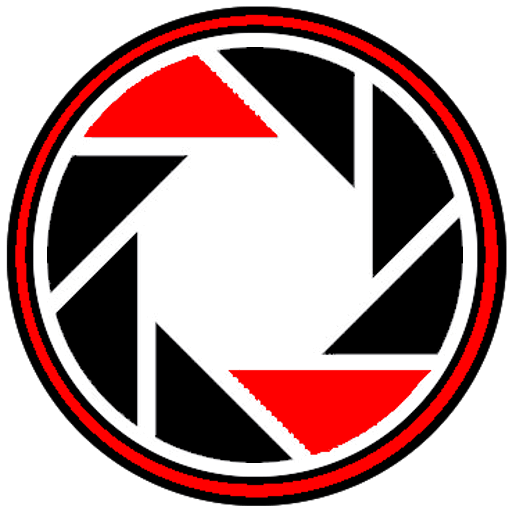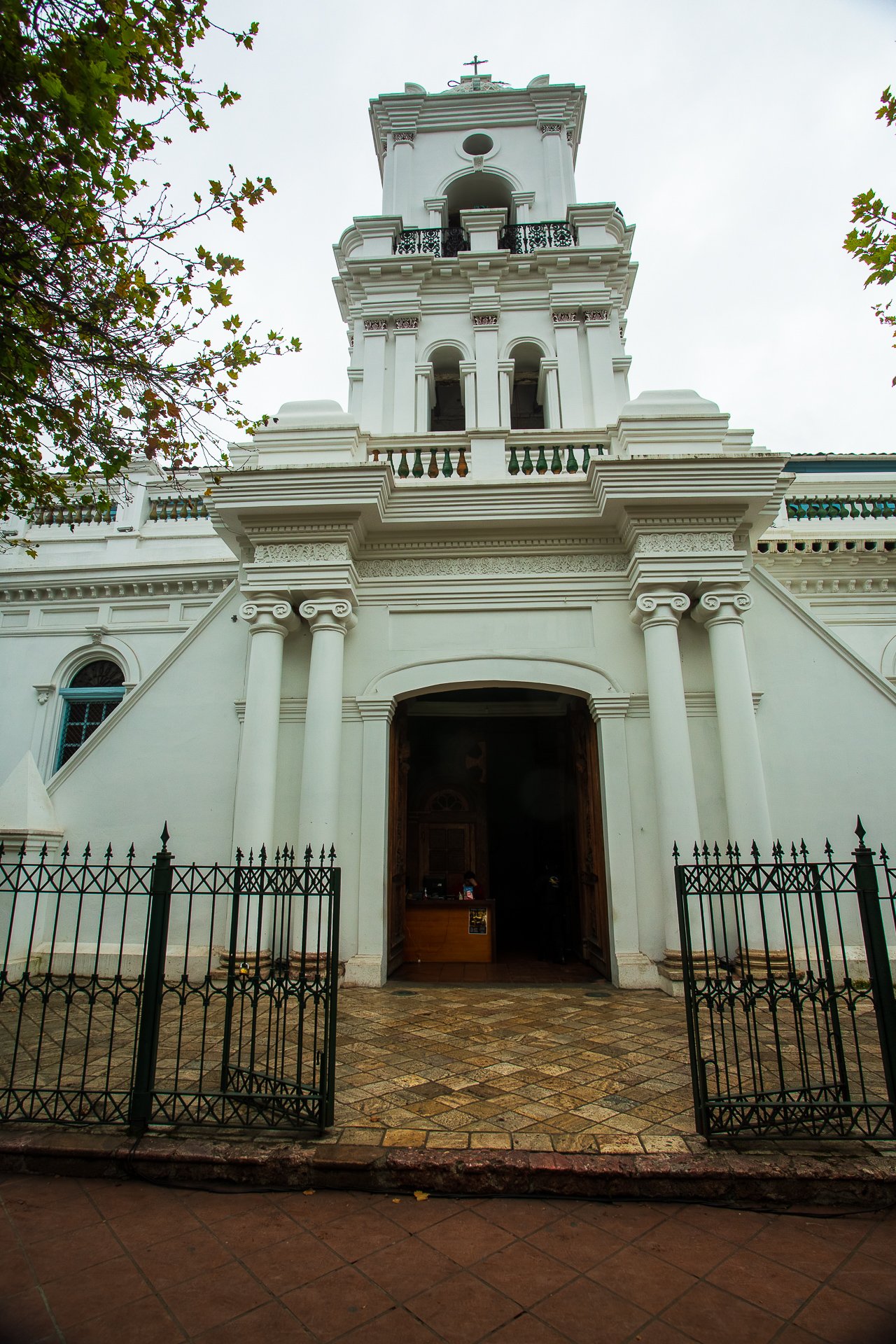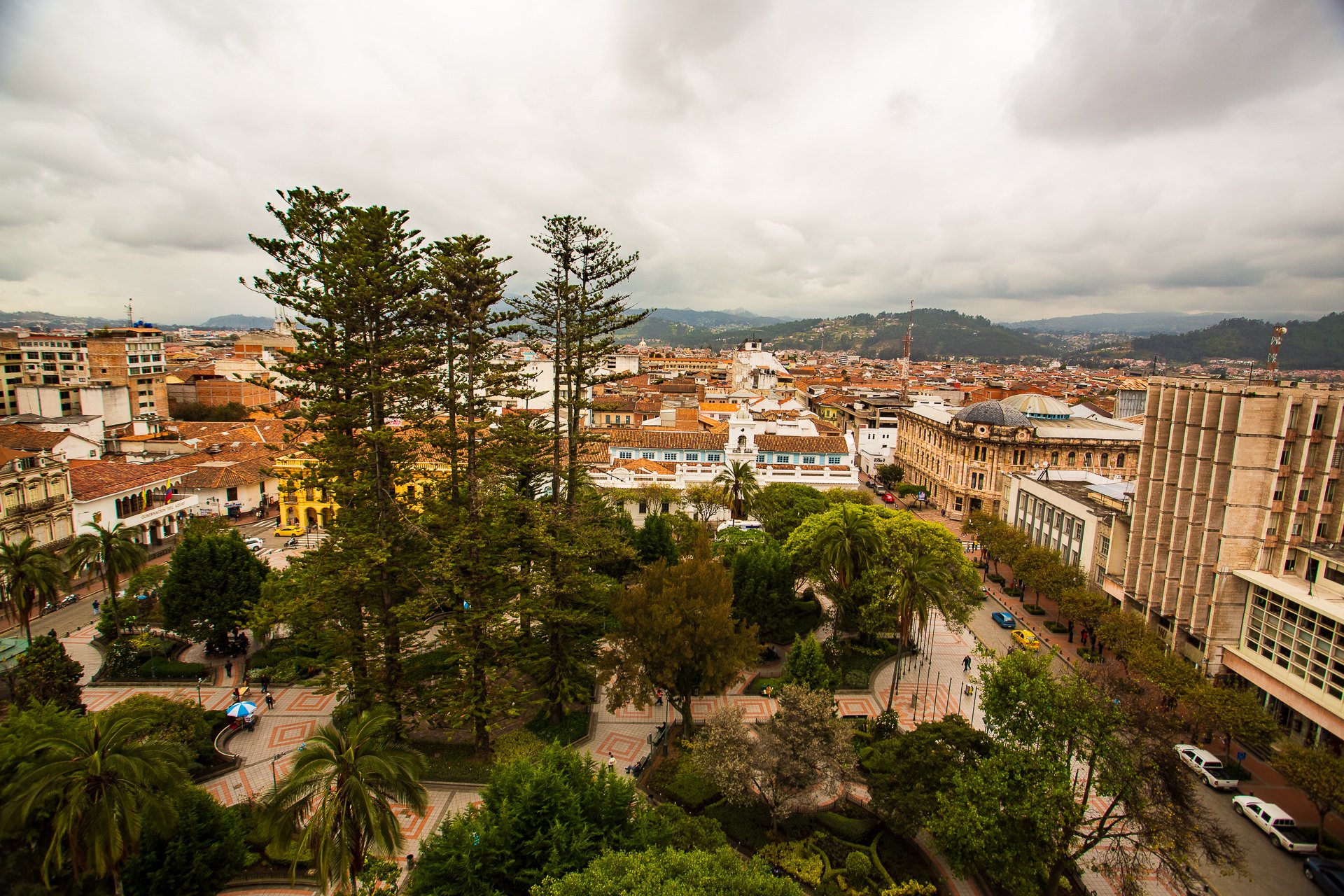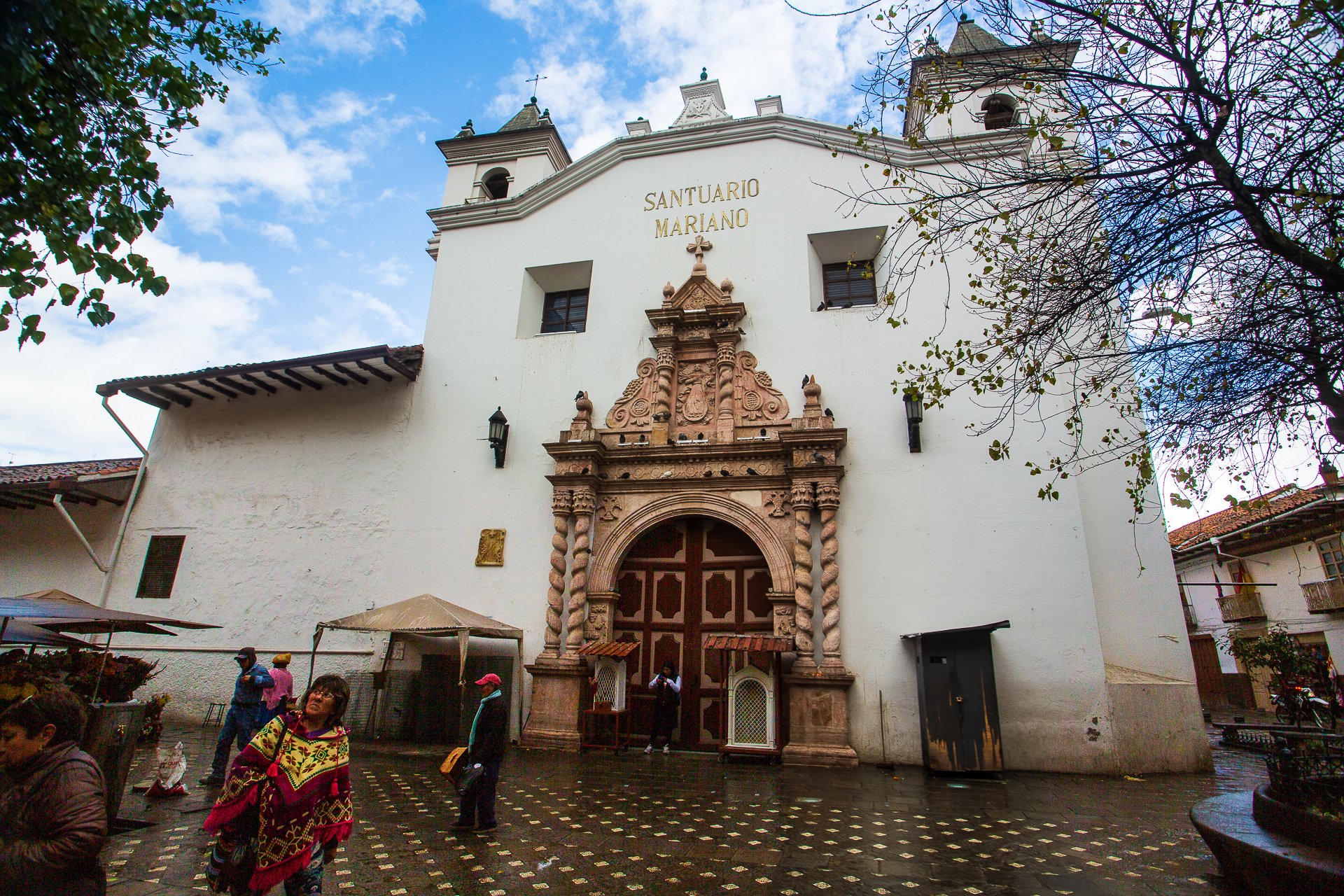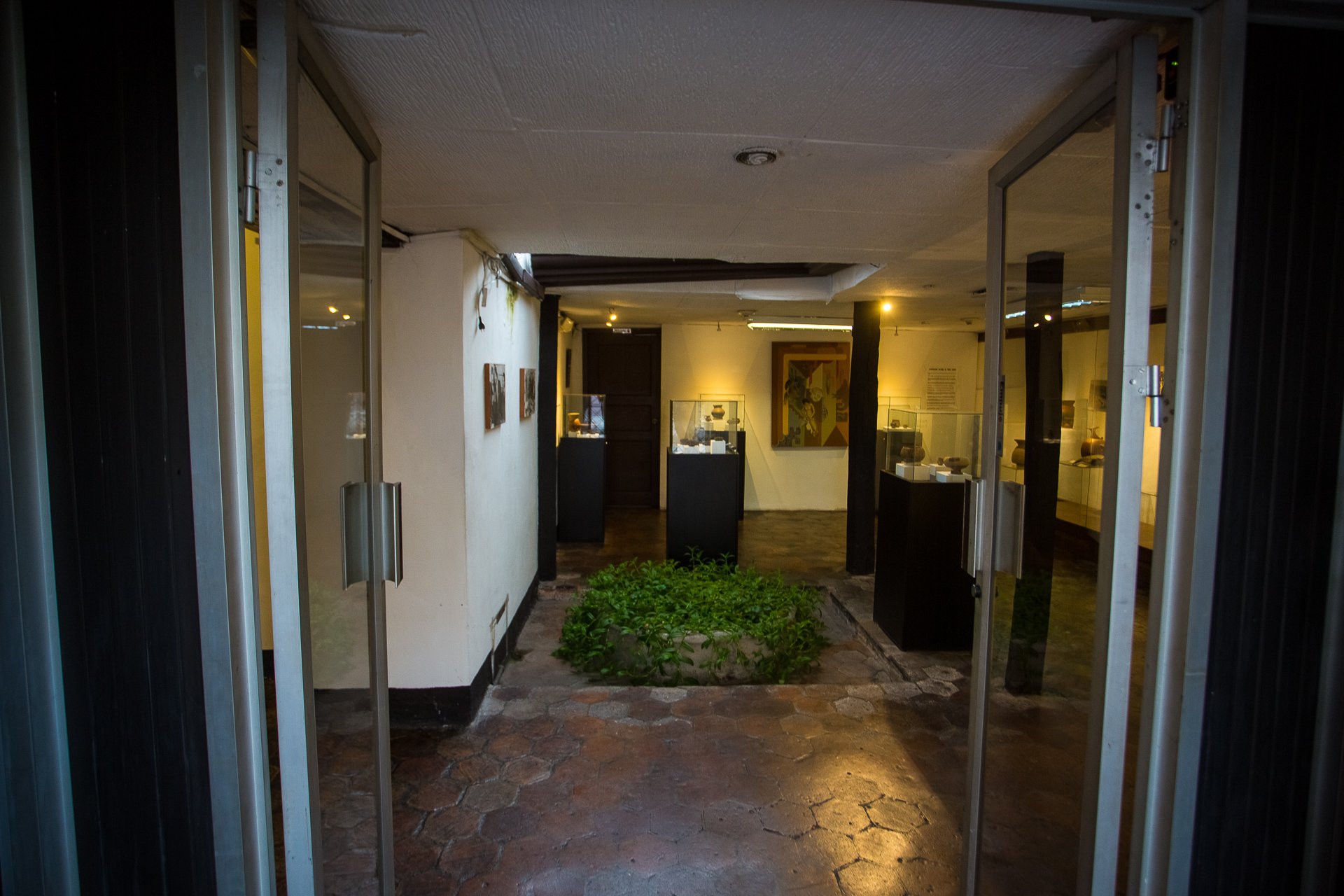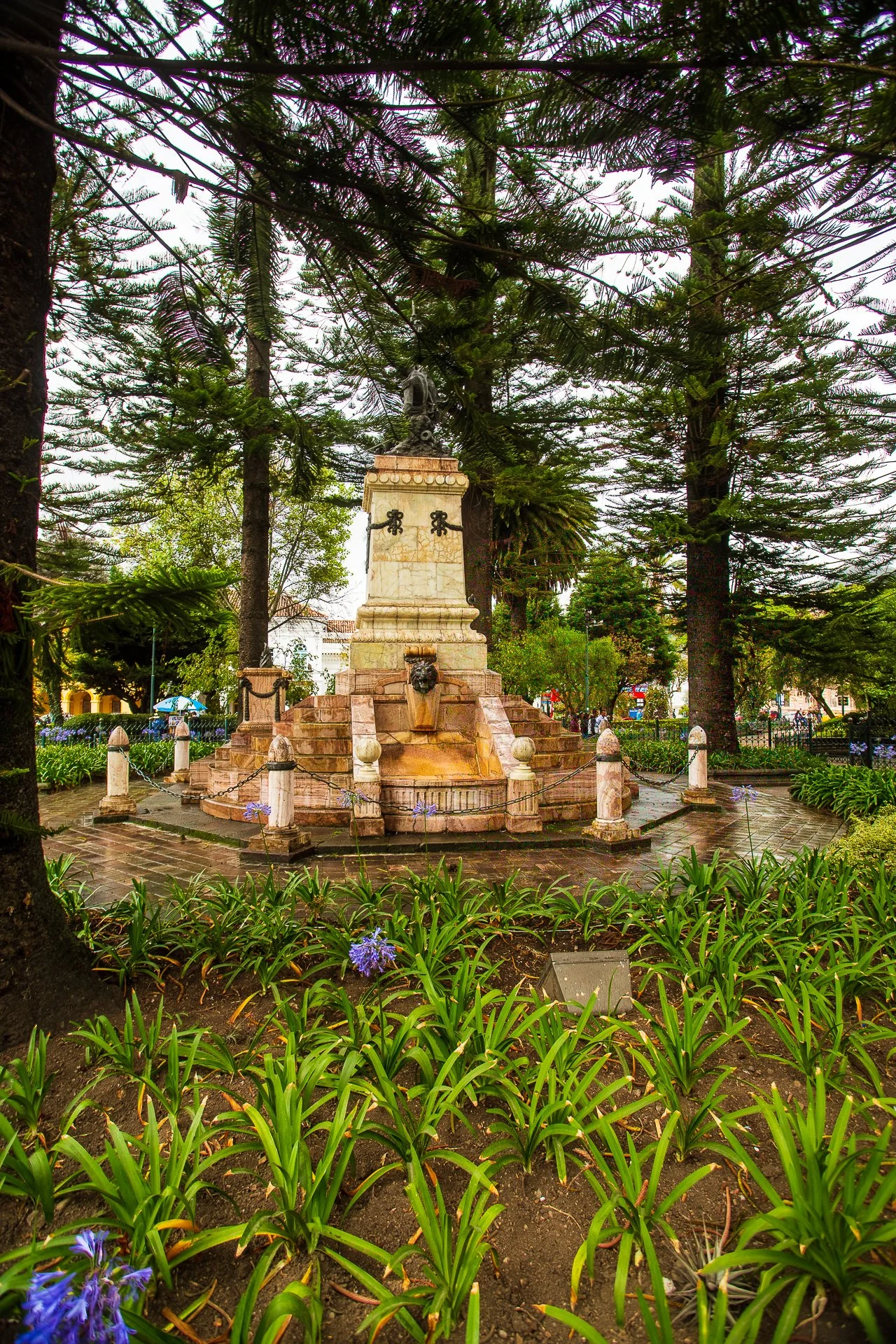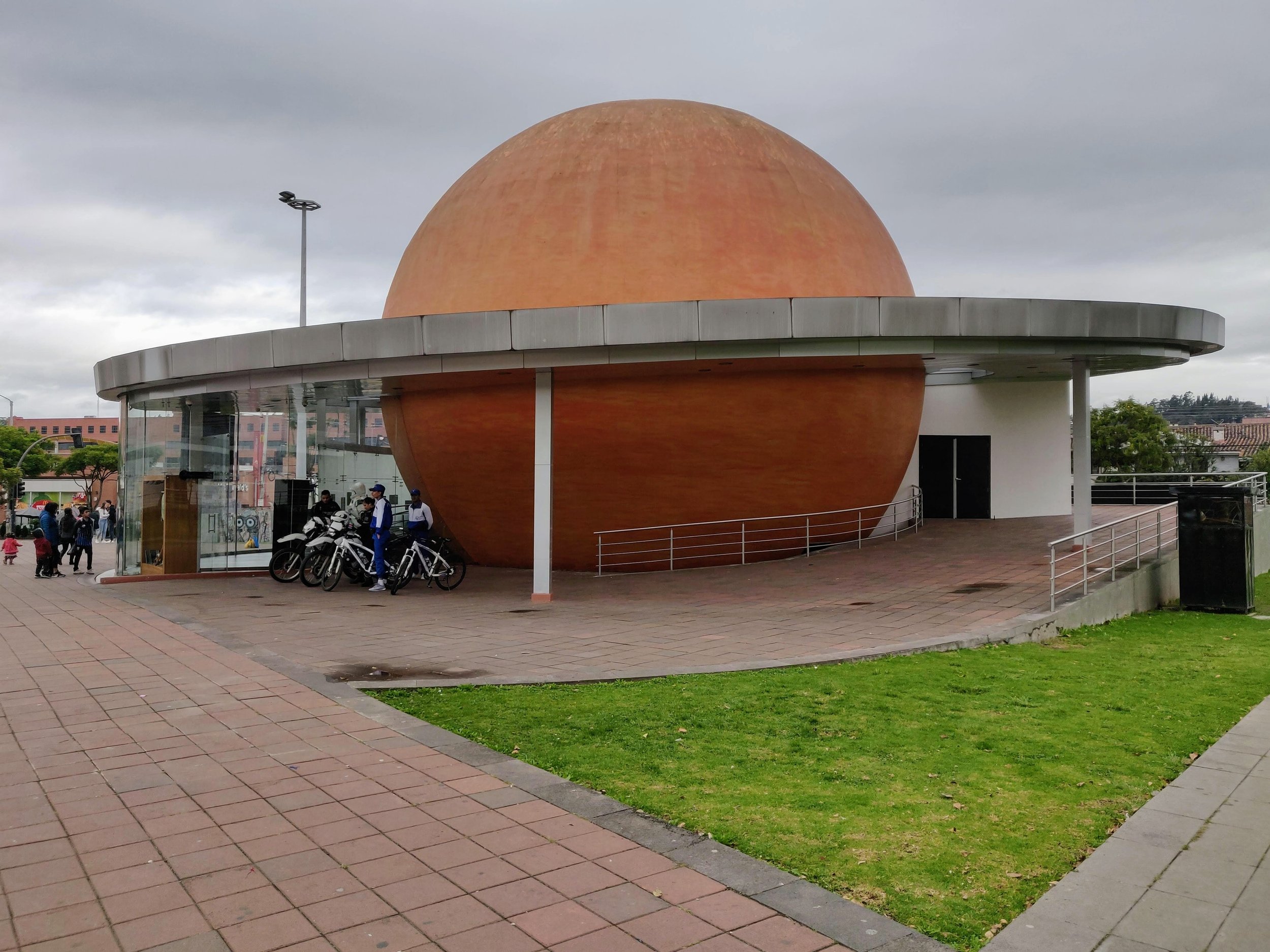Cuenca
Cuenca is laid out in a grid pattern, reminiscent of American cities and a reminder that it is a relatively new city. It is a mixture of very new buildings and some beautiful old ones, with a handful of Incan ruins scattered through the city as well.
The new Cathedral is one of the dominant buildings and is also where a lot of the begging occurs, which can be off-putting to tourists trying to get through the crowd and into the church itself.
There is a river running through Cuenca, but unlike most, it is in the south of the city, with the city proper being further north.
Sights & Culture
Catedral Vieja de Cuenca
Smaller and older than the Cathedral de la Inmaculada Concepción, the Old Cathedral is now an art museum with a (perhaps too) detailed audio tour of the building and its contents.
The tour makes it very clear how much the Latin American Catholics have built the Saints and their interplay with pre-Christian demigods into their myths. Saints in Latin America share more with the demigods of Greece than the men and women who did singular miracles.
The Cathedral main is full of religious works, but the art Museum at the back of the building is more contemporaneous and form an additional eight sections on the audio tour.
Catedral de la Inmaculada Concepción
Also known as the New Cathedral, it is a massive building with twin spires and a large dome on its heights. Inside is opulent as cathedrals often are, with dozens of niches for the demi-gods of South American Catholicism,
One strange addition, little Christmas lights in a glass case, giving worshippers a coin slot to pay for lighting up, replacing the traditional candles with a timed bulb.
For a small fee, you can climb one of the towers to the roof. It is a multi-story climb, and it brings you out to the roof of the Cathedral. You get some lovely views over the city although the Dome tends to be in the way of it being spectacular.
Underneath the Cathedral is the Crypts, though we were unable to find our way down to them. The ticket office for the roof access seems to be the gatekeeper, but he sent us off down the street to a location we never found.
Iglesia de Santo Domingo
Iglesia de Santo Domingo
Set in a square near the City Museum, the narrow white Santa Domingo church can easily be visited.
Iglesia de San Alfonso
An ornate church set back form the main plazas.
Iglesia de San Alfonso
Plazoleta Cruz Del Vado
Just past the Prohibito, there are two statues, a traditional style rotunda and a second of people climbing.
Santuario Mariano del Carmen de la Asunción
Santuario Mariano del Carmen de la Asunción
A still practising monastery is facing the plaza of flowers.
Iglesia de Todos Santos
Iglesia de Todos Santos
A friendly church, turned coffee shop on the point before you head downhill to the famous ruins.
Puente Roto
Puente Roto
An impressive historical bridge that now goes nowhere but previously would have crossed the river.
Ruinas de Todos Santos
Ruinas de Todos Santos
A small set of post-Incan ruins were found during routine renovations of property in the area. Not as impressive as you would hope, but access is free, and it is on route to the more famous ruins in Cuenca.
Ruinas de Pumapungo
The ruins of Pumapungo are better than any others in the city. Mostly it is foundation stones remaining. The hill they stand on when viewed from the bottom is a perfect example of the tiering that the locals used for farming.
On the grass, Llamas graze peacefully. The foot of the ruins has a series of birdcages containing exotic (but local) species.
Museums & Galleries
El Museo de Esqueletologia
The opening hours online and the reality of this Museum of skeletons never seemed to match up, and so we were unable to go in. On one occasion the cafe in front of it was open, but they had no idea when we’d be able to go to the museum itself.
City Museum
During our time in Cuenca, the City Museum was going through reconstruction, and most of the rooms were empty, and the central courtyard, where the museum projects films were devoid of any seating or displays.
City Museum
The only exhibit was a case full of tropical frogs. Interesting, but not enough on its own to make it worthwhile as a visit.
Prohibido Centro Cultural
A combination of cafe, tattoo parlour and Gothic art museum, the Prohibido Central Cultural Museum is a son’s dedication to his father's censored works, featuring a satanic baby Jesus, horned skulls and a lot of chains.
Prohibido Centro Cultural
With strong Camden vibes (before it sold out), it is well worth the entrance fee to look around and see works that were, until recently, deemed obscene.
I won’t spoil the décor in the bathroom, but do try the taps.
Museo Municipal de Arte Moderno
Set in a Spanish style Alhambra, it is more a contemporary art museum than a modern art museum. Featuring works of assorted Latin American artists.
It reminds me a lot of some of the spaces in Nigeria when I lived there.
Museo Remigio Crespo Toral
The home of Remigio Crespo Toral, an artist, poet and lawyer, is set over four floors connected by dark wood staircases around a central shaft. Impractical as a design, but impressive.
It contained a temporary exhibit on photography, as well as a number of items from the life of the houses' original owner. It is worth a visit.
Museo Manuel Agustín Landívar
Museo Manuel Agustín Landívar
Connected to the Ruinas de Todos Santos, this small museum is closed in the mornings, opening after lunch. It shows the found artefacts from the Todos Santos ruins. It is a minimal space, barely two rooms, but interesting to see the items so close to their original location.
Museo Pumapungo
An awe-inspiring museum, with a great look. Each floor has a different focus, one on the ways of life of local tribes with a small number of well-curated items, including a wall of masks and some shrunken heads.
The top floor had an excellent temporary photography exhibit looking at different cliques in Cuenca, for the Otaku however they were only able to find a single person for the shoot.
Like most museums, there are a few works of Salvador Dali.
The basement contains a coin museum, showing the history of currency in Ecuador before its relatively recent move to the US Dollar.
Parks & Gardens
Parque Calderón
Parque Calderón
Parque Calderón between the old and new cathedrals. A fashionable space for locals to meet and hang out. Numerous shoeshine people are there, looking to clean your shoes, serving a need that seems to have vanished in Europe.
Plaza de las Flores
Plaza de las Flores
Outside of Santuario Mariano del Carmen de la Asunción, there is the Plaza of Flowers. A square filled with vibrant and fragrant flower stalls, over a dozen sellers fills the space with a riot of colour.
Plaza de San Francisco
Surrounded by stalls and marked on one side with the San Francisco church, the plaza has three archaeological windows, all only a hundred years old, showing the cobbled stones and mosaics of the past.
Plaza de San Francisco
A large Cuenca sculpture is the most visible element of this courtyard.
Parque San Sebastian
Opposite the art museum in San Sebastian park, an extensive park with a small pond in the centre, on the northern edge, San Sebastian Church.
Parque de la Madre
A simple park near the Planetarium, is surrounded by running tracks divided by lanes for different speedrunners and has a basketball or football court in the centre.
Restaurants & Bars
Las Cruces
Set in a lovely courtyard in a Spanish style hacienda building, Las Cruces offers local food from a fixed set menu. You eat what they provide or go somewhere else. Reasonable prices and a delicious lamb soup make it worth the lack of variety. Numerous other restaurants make their home in the courtyard, so if you fancied something else, there are plenty of choices.
Seminario San Luis
They also had a wandering violin player walking the courtyard, though he missed more notes than he found.
Café Ñucallacta
Café Ñucallacta is a cosy little cafe that bakes cakes and cookies in front of the customers. It was the only place we encountered a pumpkin-spiced latte in Ecuador. Just saying the words seemed to summon five basic white girls to the cafe.
Raymipampa Restaurant
Not far from the cathedral, this restaurant splits over two floors with large arch windows shared between them. A lovely space, but the food is tending towards more of a tourist venue.
Santorini Pizzaria
Selling modern art on the walls and offering great pizza, it is an excellent place to stop for a bite to eat, especially this far out from the city centre.
Sports & Activities
Planetario
They will only start the video if there are at least ten visitors. What they do when there are fewer instead of putting on the free show is unclear. The staff wandered off down the road when it was clear there were only eight people. After a wait, we found another two people and the next showing was confirmed.
The projector is not great and is quite dim, making it hard to follow. The videos themselves are interesting, showing details on the space program and the stars generally. It is not, of course, on par with the LA Planetarium.
